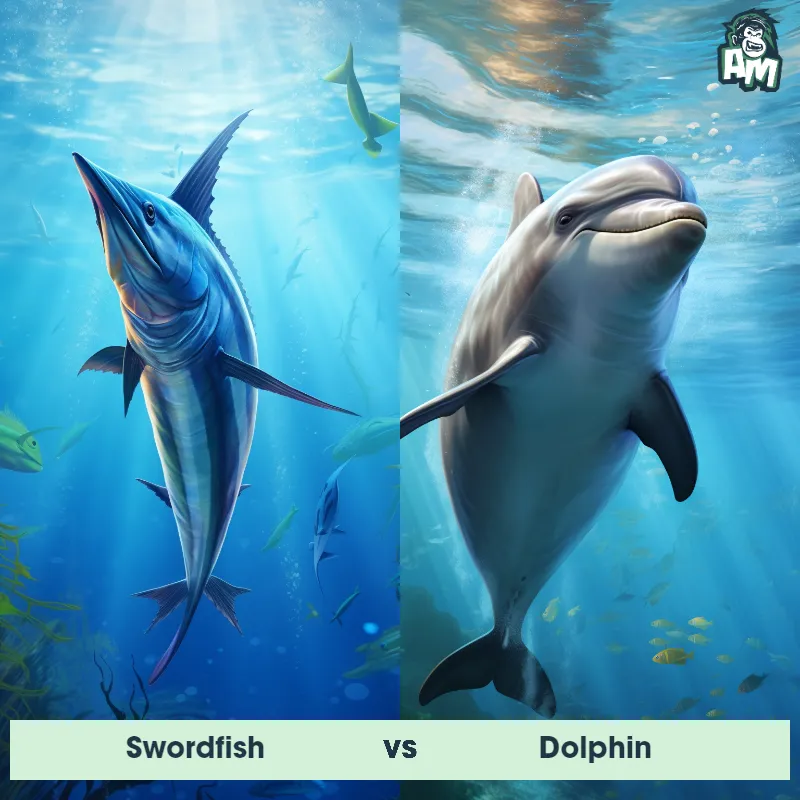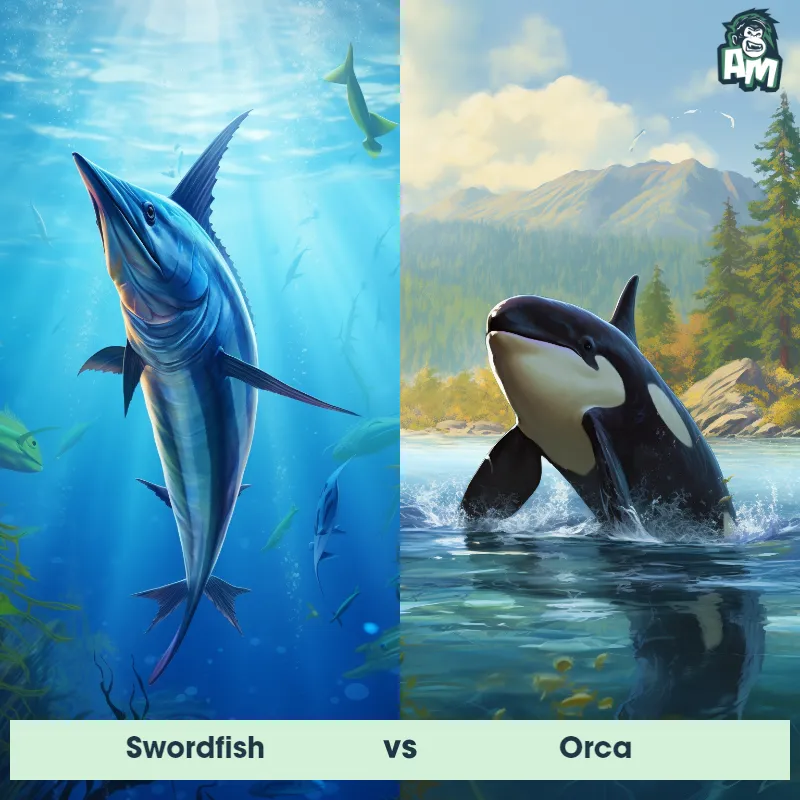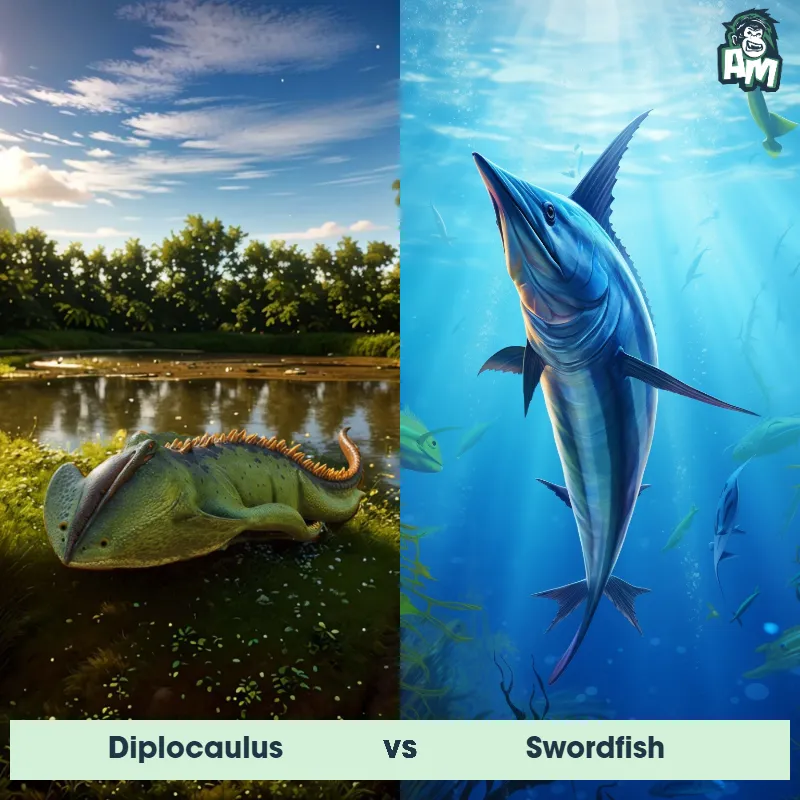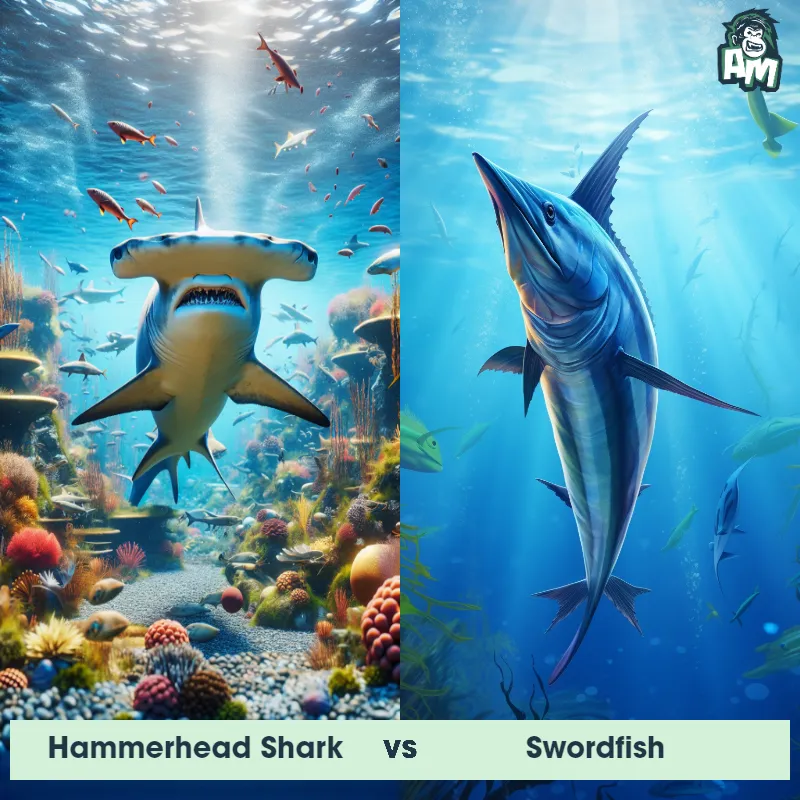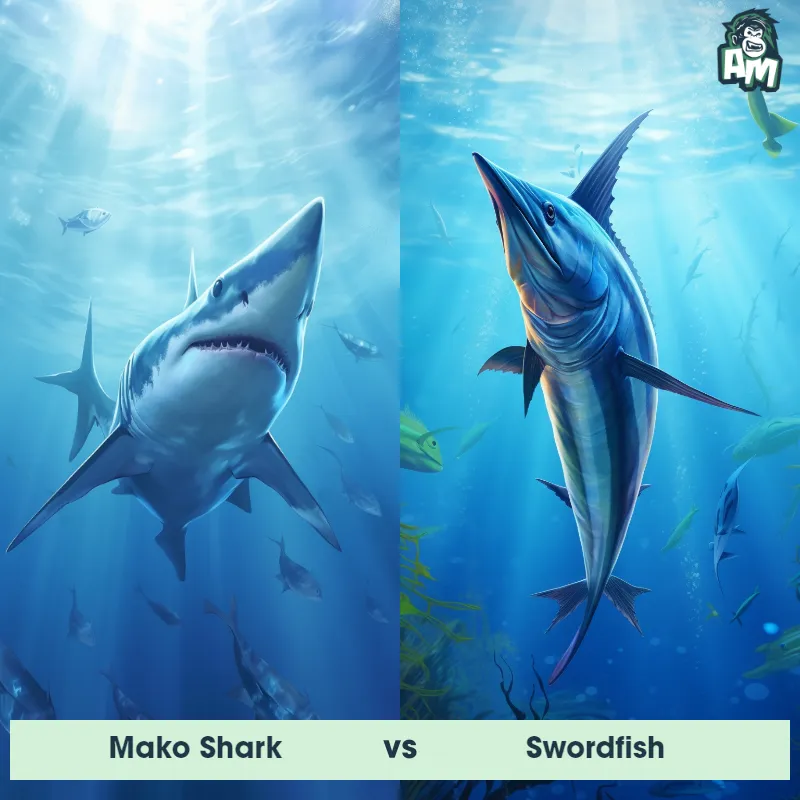The Swordfish
The Swordfish, scientifically known as Xiphias gladius, is a large predatory fish that can be found in the world's oceans. They are characterized by their long, flat bills, which resemble a sword, hence their common name. Swordfish have a streamlined body with a crescent-shaped tail and a bluish-black coloration on their upper parts, gradually fading to a silvery-white on the lower sides and belly. They have a muscular build and can grow up to 14 feet in length and weigh over 1,400 pounds. Interestingly, unlike most other fish, swordfish is known to have a unique circulatory system that helps them conserve heat.
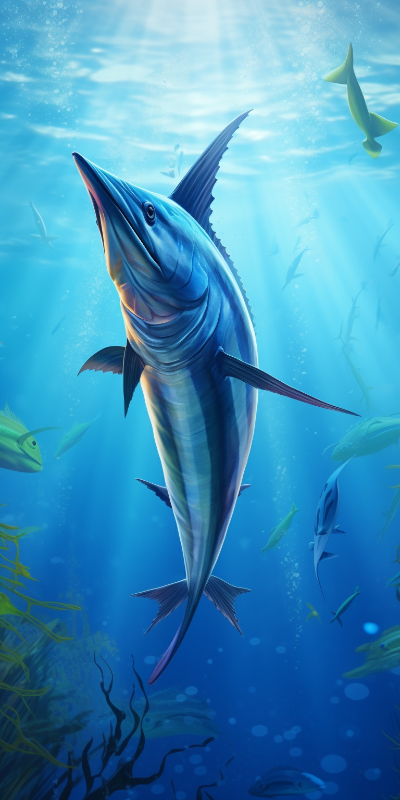
| Swordfish | |
|---|---|
| Size | Up to 15 feet (4.6 meters) |
| Weight | Up to 1,400 pounds (635 kilograms) |
| Speed | 60 mph (97 km/h) |
| Key Strength | Speed and powerful, sword-like bill |
| Biggest Weakness | Limited maneuverability due to streamlined body |
| Scientific Name | Xiphias gladius |
| Family | Xiphiidae |
| Habitat | Open Oceans |
| Geography | Worldwide in tropical, subtropical, and temperate seas |
| Diet | Various fish and squids |
| Lifespan | 9 years - 15 years |

The Swordfish
The Swordfish, scientifically known as Xiphias gladius, is a large predatory fish that can be found in the world's oceans. They are characterized by their long, flat bills, which resemble a sword, hence their common name. Swordfish have a streamlined body with a crescent-shaped tail and a bluish-black coloration on their upper parts, gradually fading to a silvery-white on the lower sides and belly. They have a muscular build and can grow up to 14 feet in length and weigh over 1,400 pounds. Interestingly, unlike most other fish, swordfish is known to have a unique circulatory system that helps them conserve heat.
Fun Fact: The Swordfish is known for its remarkable speed and agility in the water, reaching speeds of up to 60 miles per hour, making it one of the fastest fish species in the ocean.
| Swordfish | |
|---|---|
| Size | Up to 15 feet (4.6 meters) |
| Weight | Up to 1,400 pounds (635 kilograms) |
| Speed | 60 mph (97 km/h) |
| Key Strength | Speed and powerful, sword-like bill |
| Biggest Weakness | Limited maneuverability due to streamlined body |
| Scientific Name | Xiphias gladius |
| Family | Xiphiidae |
| Habitat | Open Oceans |
| Geography | Worldwide in tropical, subtropical, and temperate seas |
| Diet | Various fish and squids |
| Lifespan | 9 years - 15 years |
Swordfish Matchups
We use AI to simulate matchups between the Swordfish and other animals. Our simulation considers size, strength, and natural predatory behaviors to determine the most likely outcome.
Swordfish: Diet, Predators, Aggression, and Defensive Behaviors
What do Swordfish eat?
Swordfish are opportunistic feeders and primarily prey on a variety of fishes such as mackerel, herring, and squid. They are known for their powerful swimming abilities and sharp bill, which they use to slash and stun their prey before consuming it.
Do Swordfish have any predators?
Swordfish, particularly juvenile ones, are vulnerable to predation by larger sharks such as great white sharks and mako sharks. However, adult swordfish are typically apex predators in their marine environment and have few natural predators due to their large size and formidable defense mechanisms.
Are Swordfish aggressive?
Swordfish are not typically considered aggressive towards humans, but they can exhibit aggressive behavior towards potential threats or competitors in their environment. They are known to be solitary and territorial animals, especially during mating season.
Do Swordfish fight?
Swordfish are known for their powerful fighting abilities when hooked by fishermen. They are respected among anglers for their strength, endurance, and acrobatic displays during a fight. It is not uncommon for a swordfish to put up a vigorous battle when caught on a fishing line.
How do Swordfish defend themselves?
Swordfish have several defense mechanisms to protect themselves from predators and threats. Their main defense is their speed and agility in the water, allowing them to quickly evade potential dangers. Additionally, their sharp bill can be used as a weapon for self-defense, making them formidable opponents for any predator.
What is Swordfish's biggest weakness in a fight?
Despite their speed and strength, a swordfish's biggest weakness in a fight is likely their stamina. While they are powerful swimmers and fighters, prolonged struggles with predators or fishermen can exhaust them, making them more vulnerable to capture or predation. Their large size can also make them more susceptible to fatigue during a prolonged battle.
Fun Fact: One fascinating fact about Swordfish is the way they use their bills to hunt. They are capable of using their bills to slash through schools of prey fish, stunning or impaling them in the process, which makes hunting easier for them.
Fun Fact: Swordfish are highly migratory creatures, known for their epic journeys across the ocean. They have been tracked traveling distances of over 6,000 miles, which is equivalent to swimming across the Atlantic Ocean and back. This showcases their incredible endurance and ability to adapt to different environments.



